GamesRadar+ Verdict
The Razer Kiyo Pro Ultra is the 4K update to what we deem the finest webcam on the market. Other than a seriously steep price of admission to the tune of $300 / £300, this as good as you're going to get without splashing out on a (likely more expensive) DSLR camera.
Pros
- +
Great software and features
- +
Excellent 4K footage
- +
Low light performance
- +
Privacy features
Cons
- -
Expensive
- -
A few (minor) software annoyances
Why you can trust GamesRadar+
The Razer Kiyo Pro Ultra is the 4K update to what we deem the finest webcam on the market. Razer's latest camera takes aim at streamers and content creators, carrying on the premium webcam legacy from the Razer Kiyo Pro. This time, Razer has doubled down on low light capabilities and added 4K resolution, making this an absolute blinder that will make anyone's stream look like a million dollars.
Sequels are so hard to get right these days. Particularly when one comes out hot on the heels of something that was so good. The Kiyo Pro Ultra had a lot to live up to after the Pro, and if you take things back even further to the original Kiyo, Razer might as well have a trilogy of films to cap off here. Other than a seriously steep price of admission to the tune of $300 / £300, this has smashed box office records, instantly become the best film in the series, and left all genre competitors in its wake.
In almost every way, this is the best webcam on the market for streamers and content creators.
Design
In our Razer Kiyo Pro review, we described it as a 50s muscle car... and if you're at all familiar with that camera's design, the Kiyo Pro Ultra will be virtually indistinguishable from it. It's a chunky great presence atop any monitor. While the size of this webcam might be enough to put people off, it's not without good reason. The Kiyo Pro Ultra packs a lot of power into the body of a webcam, and the build of this one is somewhat more justified than the Kiyo Pro thanks to that new and improved 4K resolution.
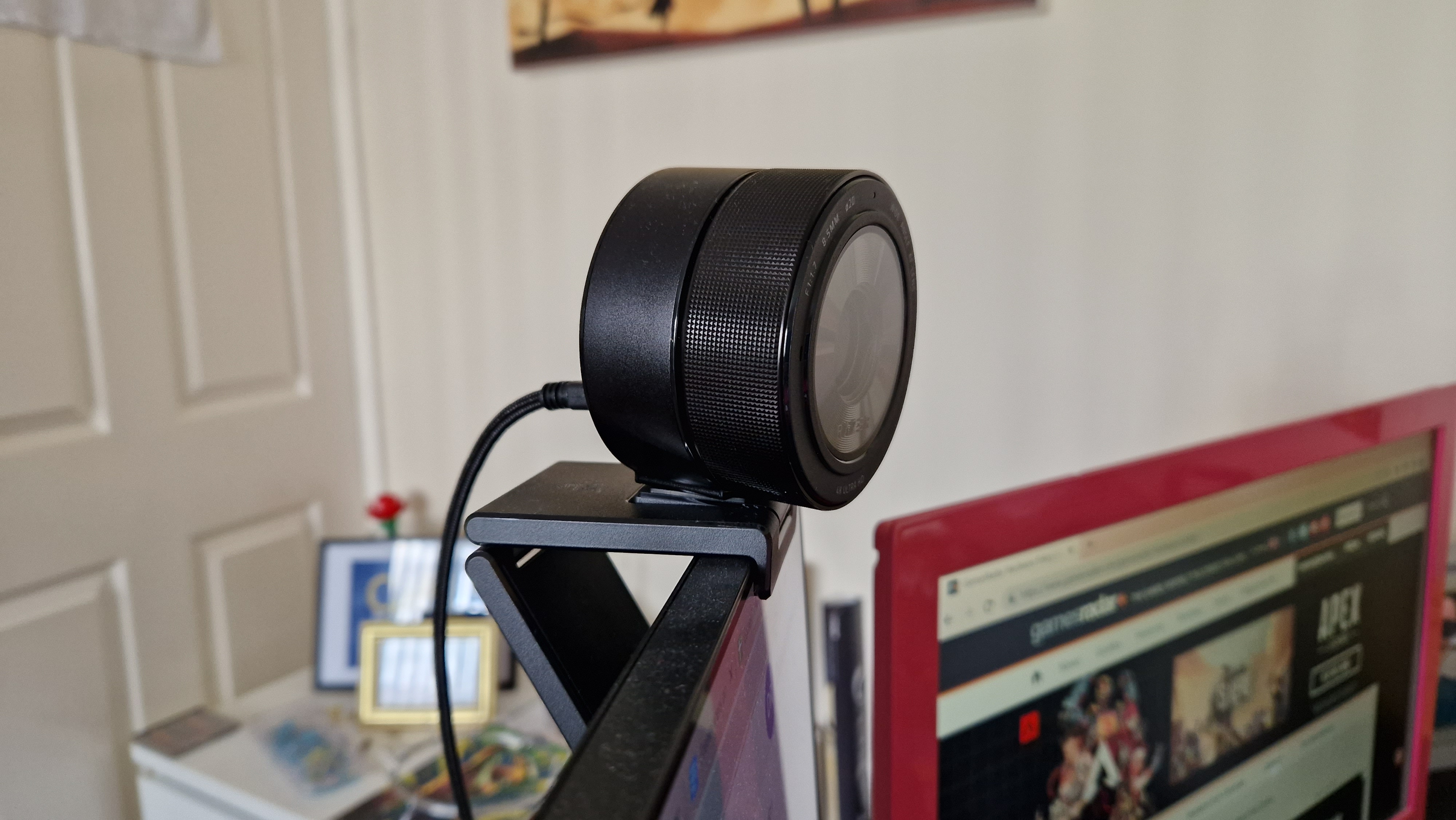
Even so, the stock stand for the Kiyo Pro Ultra is rock solid, and hasn't once shifted or budged during my time with it. Stream scenes are fragile things, and a slight nudge out of position for a webcam can mean a change to lighting, poor framing, and a slew of annoyances. With a stand as great as this though, that should never be a problem. The camera itself attaches to the stand with a regular bolting mechanism, meaning it can easily attach to a tripod or camera arm if that's your preferred method.
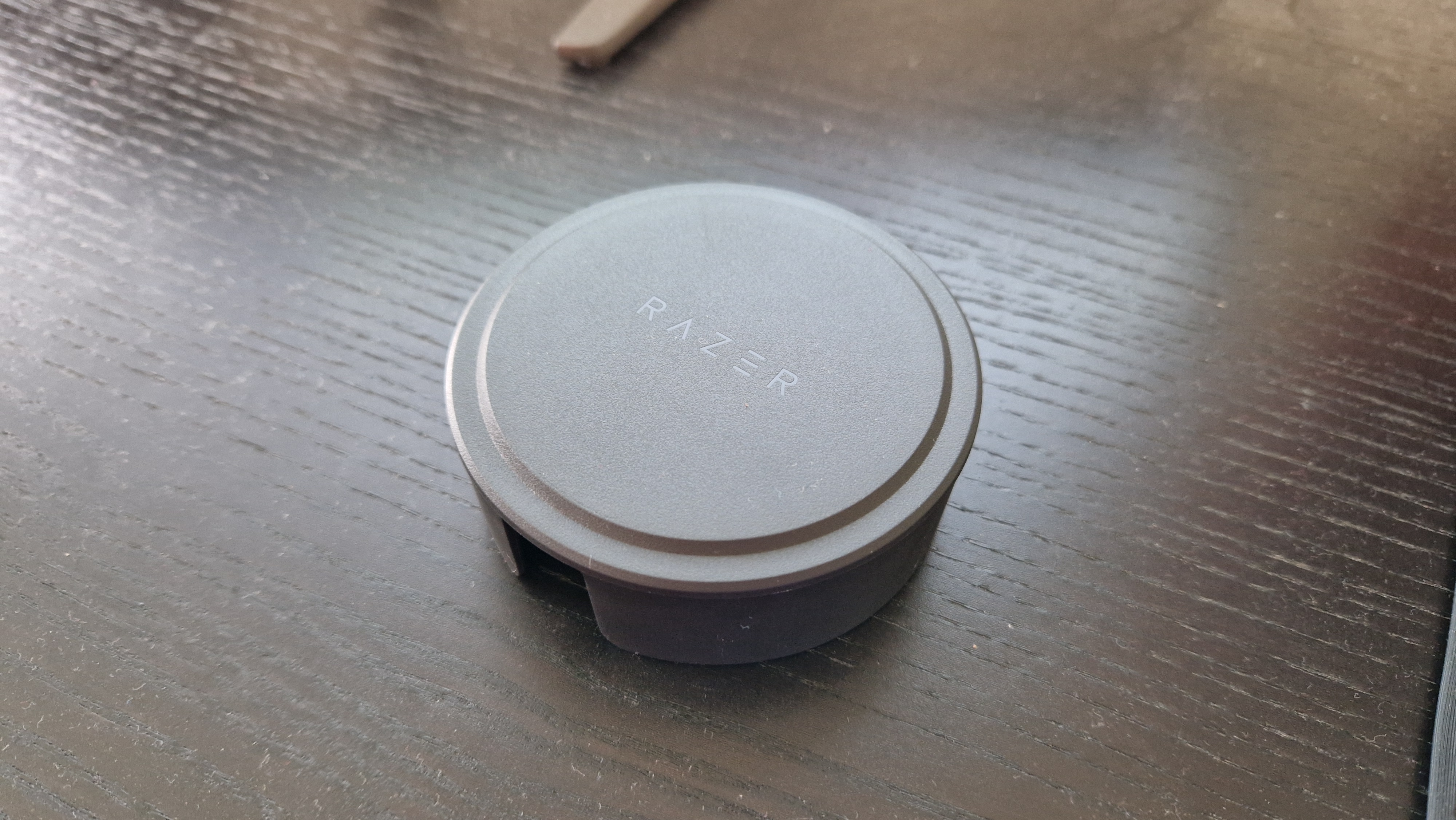
The Ultra also comes with two layers of privacy settings - an internal lens cover that closes over by twisting it to the left, and a rubberized cover that slides on and off the front of the camera with ease. In this day and age, I love small features like that. The entire privacy-of-webcams debate usually tends to have people fall on two sides of a fence - conspiracy theorist, or someone who doesn't care. Having two whole options for privacy, though, is such a good-faith builder, and I'm glad Razer can incorporate them into its webcams, even if at least one of these is actually meant more for protection of an expensive camera.
Benefit of the doubt given!

Features
Perhaps the biggest selling point for the Kiyo Pro Ultra, besides 4K, is that Razer says it has the largest sensor ever placed inside a webcam. Essentially, a bigger sensor will collect more light, allowing for clearer and sharper images, and a lot better colour range - especially in darker conditions. In fact, Razer has built the Ultra with low-light in mind, as it's put a low-aperture lens inside. In this way, the Kiyo Pro Ultra almost takes for granted that it'll out-perform other webcams, and targets DSLR cameras as competition.
On top of that, there are some great features built in to the Kiyo Pro Ultra. For example, there's AI-powered facial tracking autofocus and auto exposure. Of course, after the Kiyo Pro, HDR is back and seems much improved thanks to the aforementioned innards of the camera - namely its Sony STARVIS 2 Sensor, and F/1.7 lens. The Ultra has an omni-directional mic inside, connects via USB-C to USB, and a max FOV of 82 degrees.
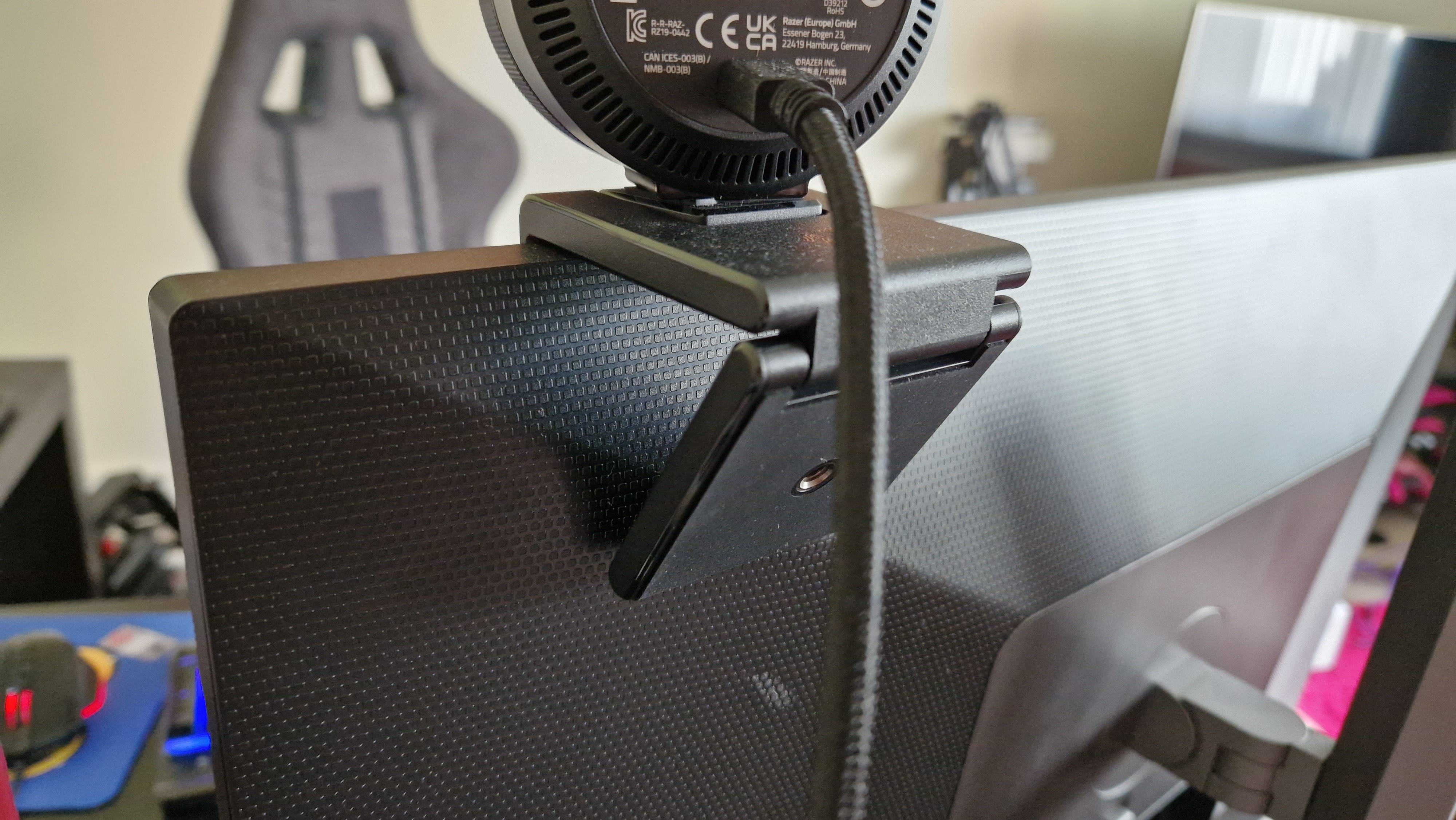
Of course, a Razer accessory wouldn't be complete without Synapse integration - that is, full adjustability and control through Razer's proprietary catch-all software. Through Synapse, you can fine-tune zoom, pan, tilt, shutter speed, contrast, brightness - and so on. There isn't much you can't adjust through the Synapse software, and there's a nice save profile feature that lets you configure for different scenarios. All in all, it's about as conclusive as webcam software gets.
Performance
There's no other way to say it - the Razer Kiyo Pro Ultra takes some stunning footage. Even without one of the best ring lights, the images are so well-balanced. Although out of the box the colours seemed fairly washed out and a bit dull, it didn't take long to footer about in the Synapse settings to unlock the Ultra's true potential. Using it in one of my live streams, viewers almost immediately remarked on how good the camera looked. One viewer that knows me personally, but who shall remain nameless, said it apparently made me look better than I do in real life. So that's something?
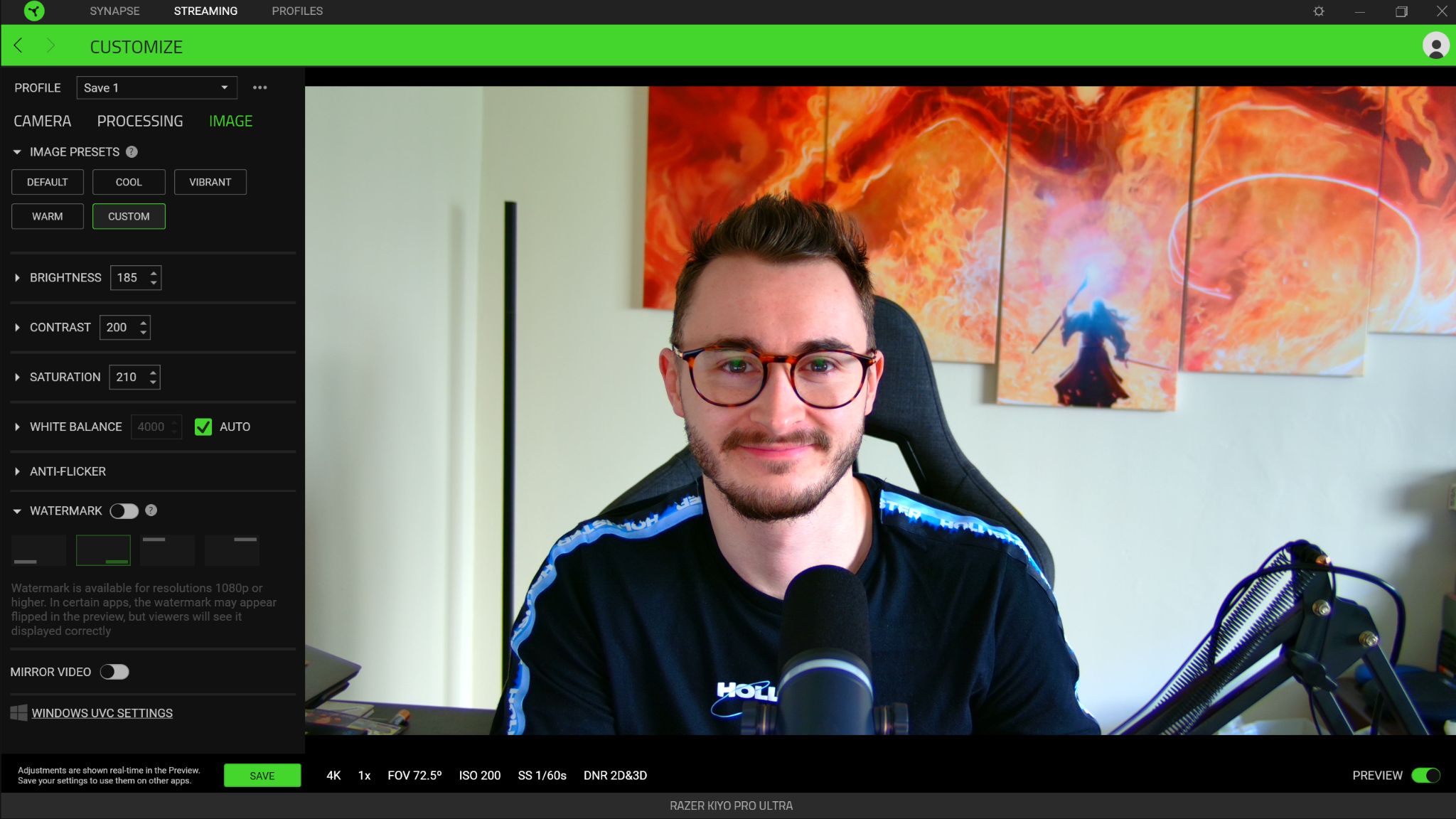
It's almost as though the Kiyo Pro Ultra performs better in low-light scenarios than in the daytime when there was plenty of light in the room. This is excellent for streamers who rely on RGB lighting in a dark room. You can tell a lot of attention has been geared at making this webcam the perfect tool for streamers, and the low-light performance epitomizes that.
The Kiyo Pro Ultra was excellent both in live scenarios during streams, and when recording footage for editing later. Set at 30fps, the footage was rock solid when I chucked it into a Premiere Pro editing session, so I can definitely endorse the Ultra as a great tool for content creators.
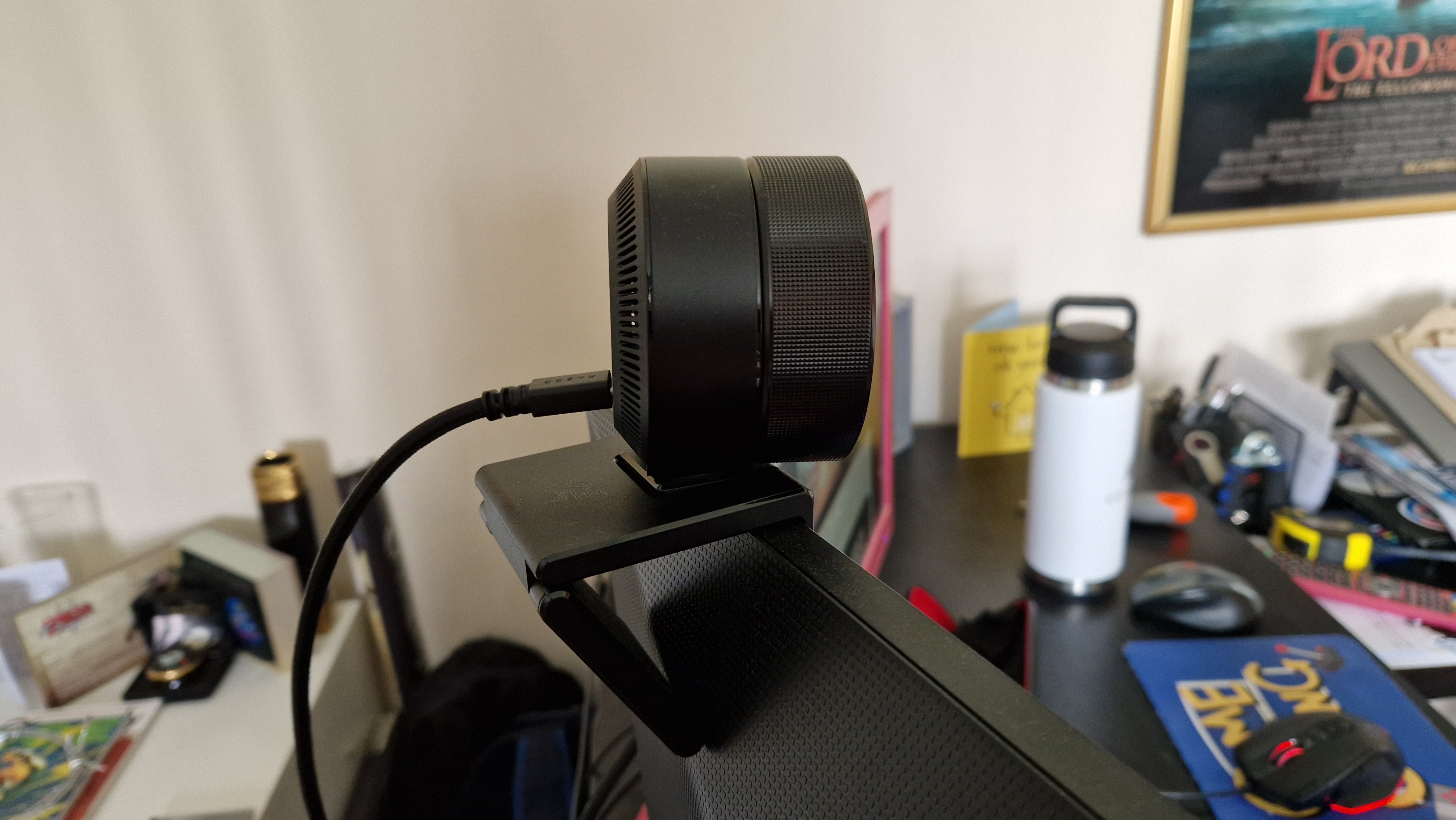
I really like how the Synapse software performs, albeit with a few caveats. The pure scope of adjustments you can make is amazing, and being able to have this power at your fingertips is an excellent creative tool. Somewhat annoyingly though, I need to open the Synapse software up fully to activate whatever settings and profiles I have saved. This could be something I'm doing wrong, or an issue with my software, but it probably won't be a problem for people who already use a lot of Razer streaming gear, since they likely run Synapse for all of that anyway.
The other very small gripe is that while there's plenty that you can change in the Synapse software, there are a few bizarre settings you don't have direct sliders for. Adjusting zoom and FOV can only be done at certain resolutions if Lens Distortion Compensation is enabled. This is easy enough to go without, but it's a shame that it means there's no way of separately adjusting these things even with distortion compensation turned off. It also means FOV is locked at 72 degrees with this setting on. You'll notice that I am nit-picking here - you have to with something this good.

Should you buy the Razer Kiyo Pro Ultra?
Like the Razer Kiyo Pro before it, the Kiyo Pro Ultra is definitely not for everyone. This is a webcam for content creators that will roll a DSLR camera and face-cam into one package. As a result, you'd be hard-pressed to find a more expensive webcam, and I don't think your average remote worker needs anything close to this for daily video meetings. You don't need to spend this much for a decent webcam, so don't.
If you are a content creator, the same might apply, honestly. Remember, Twitch still doesn't support 4K live streams at the time of writing, so there's really no need for a 4K webcam if that's all you're using it for. In a way, content creation for the likes of YouTube is the same. Unless you have one of the best capture cards that will match it, 4K isn't super necessary for gaming content unless you go full-time.
Caveats aside, I don't think there's a better webcam on the market if your budget can stretch this far. Images and footage are incredible, especially in low-light scenes. If they're anything like mine, your audiences will thank you for getting a camera this good - it honestly feels next-gen.
The Kiyo Pro Ultra is as good as your going to get without splashing out on a likely more expensive DSLR camera, and that won't give you a lot of the plug-and-play benefits this will.
How we tested the Razer Kiyo Pro Ultra
The Razer Kiyo Pro Ultra was my webcam of choice for around a month before this review. During that time I used it for video calls for work, live streams on both Twitch and YouTube, recording videos for my YouTube channel, and other testing purposes.
I played around with lighting lots in that time, testing out how the Kiyo Pro Ultra responded to different scenarios. I also made extensive use of the Synapse software to adjust camera settings, as well as save different profiles for using the camera at different times of the day.
To test the frame rate capture, I recorded a brief video of me talking into one of the best microphones for streaming, synced up the footage in a Premiere Pro project, and watched to see if sync fell out at all. I also used OBS Streamlabs to test the Kiyo Pro Ultra's live capabilities.
To read more about how we test gaming tech at GamesRadar, take a look at our Hardware Policy.
Looking for more Razer gear? Take a look at the best Razer controllers, the best Razer laptops, the best Razer headsets, the best Razer mouse, and the best Razer keyboards.
One of my earliest memories is playing SuperMario64 and wondering why the controller I held had three grips, but I only had two hands. Ever since I've been in love with video games and their technology. After graduating from Edinburgh Napier University with a degree in Journalism, I contributed to the Scottish Games Network and completed an Editorial Internship at Expert Reviews. Over the last decade, I’ve been managing my own YouTube channel about my love of games too. These days, I'm one of the resident hardware nerds at GamesRadar+, and I take the lead on our coverage of gaming PCs, VR, controllers, gaming chairs, and content creation gear. Now, I better stop myself here before I get talking about my favourite games like HUNT: Showdown, Dishonored, and Towerfall Ascension.




